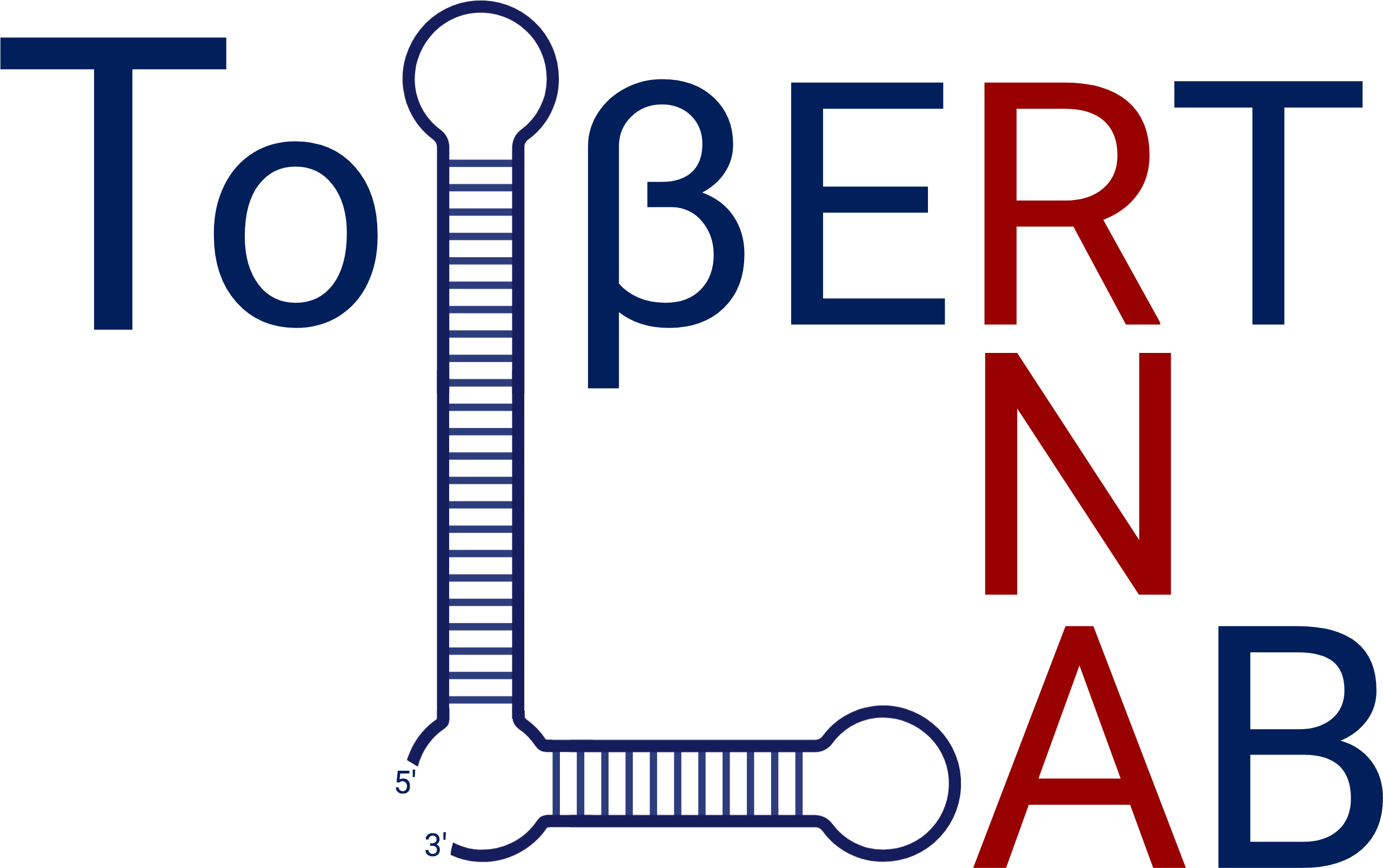The Tolbert lab began after Blantons PhD training with Ravi Basavappa and Doug Turner at the University of Rochester and a postdoctoral position with Mike Summers at the University of Maryland Baltimore County. The first iteration started in 2009 at the University of Miami in Ohio and remained there for 3 years until moving to Case Western Reserve University in 2012. The lab grew overtime and saw its first independent publication in 2012 with longtime lab member and all-around protein expert Jeff Levengood as the first author and lead on the project. Blanton received tenure in 2015 and full professorship in 2019. In late 2022 Blanton was hired as the first VP of Science leadership and Culture at the Howard Hughes Medical Institute and the lab moved to the University of Pennsylvania in 2023. The group decided to take this transition to UPenn as a time to rebuild and be intentional in how the lab was constructed and the first year at UPenn was focused on this task and gave the group the time and space to create the current iteration of the Tolbert lab.
Our History
Our Goals

Vision
To leverage foundational principles of intermolecular RNA interactions for the benefit of humanity.

Mission
To advance scientific discovery via creating a lab culture that is diverse, equitable, inclusive and fosters a sense of belonging.

Training Philosophy
The Tolbert research group strives to create a highly interdisciplinary learning environment where trainees have the opportunity to gain experience in biophysical chemistry, molecular biology, computational biology, and virology. We value the input and perspectives of all lab members no matter their title because we all deserve respect and dignity, and we all offer contributions to scientific advancement.
Research Overview
Research in the Tolbert group endeavors to understand the molecular mechanisms RNA viruses use to express their genomes. Nuclear magnetic resonance (NMR) spectroscopy and other solution biophysical methods are used to determine 3D structures and physiochemical properties of viral RNA regulatory elements both free and bound to their cognate host proteins. Our primary focus is to better understand how the human immunodeficiency virus (HIV), the etiological agent of AIDS, regulates RNA processing events. Towards that end, we determined the first high-resolution structure of a key HIV regulatory RNA, the Exon Splicing Silencer 3 (ESS3), and elucidated its thermodynamic binding profile to the human protein hnRNP A1.
Other projects include determining the molecular mechanisms of transcriptional control of HIV latency and translational control of Enterovirus 71 (EV71) — the etiological agent of Hand, Foot, and Mouth Disease — and studying the role of RNA-binding proteins in infection by SARS-CoV-2 (the virus responsible for COVID-19). Most recently our research has expanded to include deeper investigation of 5’ untranslated regions (5’UTR) of mRNA as a regulatory element of structure, folding, binding properties, RNA-protein interactions, and function. We are also interested in identifying and developing therapeutic targets on internal ribosome entry sites (IRES’s), understanding the mechanisms of RNA-protein complexes, and investigating the chemical biology of ribonucleoproteins (RNPs).
Research Techniques
NMR spectroscopy, isothermal titration calorimetry, differential scanning fluorimetry, high performance liquid chromatography, protein chromatography, X-ray crystallography, dissociation curve analysis, and molecular dynamics simulations.

